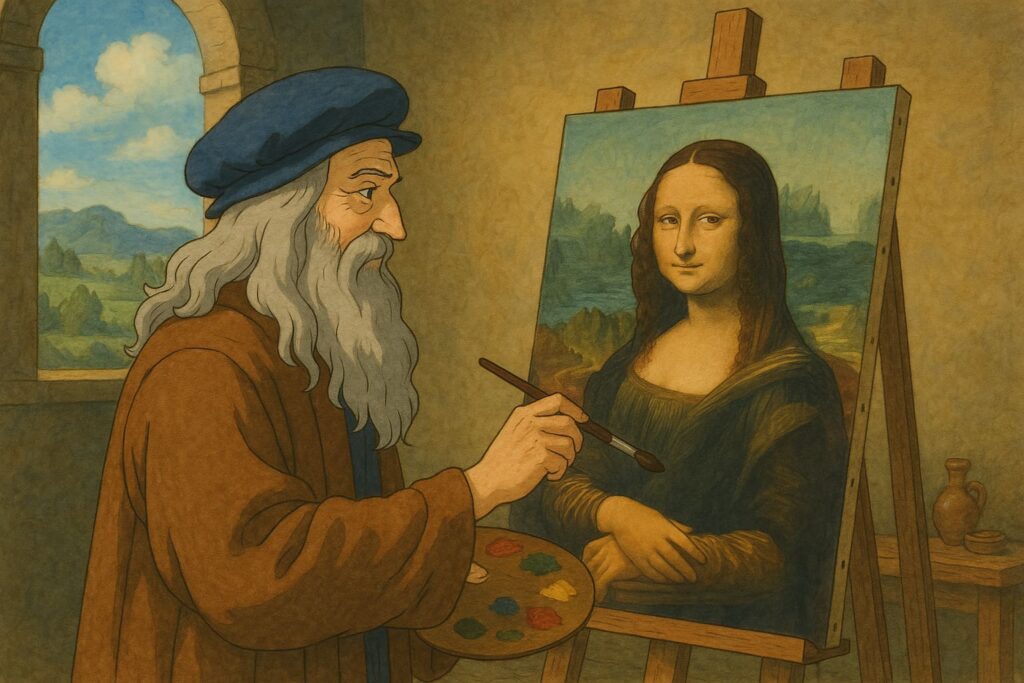A new viral trend is sweeping across social media platforms, transforming personal photos and pop culture references into whimsical scenes reminiscent of Studio Ghibli’s beloved animated films. This artistic phenomenon emerged almost immediately after OpenAI unveiled GPT-4o, its latest multimodal AI model with enhanced image generation capabilities.
The Rise of a Viral Sensation
When OpenAI released GPT-4o in late March 2025, few anticipated the cultural phenomenon that would follow. Within hours, social media feeds began filling with images featuring the distinctive aesthetic of Studio Ghibli—the legendary Japanese animation studio known for classics like “Spirited Away,” “My Neighbor Totoro,” and “Howl’s Moving Castle.”
Users discovered that the AI model could transform ordinary photos into scenes that captured the dreamy landscapes, soft color palettes, and charming character designs synonymous with Hayao Miyazaki’s artistic vision. The trend spread rapidly across platforms, with hashtags like #GhibliStyle and #AIGhibli gaining significant traction.
Even Sam Altman, OpenAI’s CEO, participated in the trend, changing his profile picture to a Ghibli-style AI-generated image. This high-profile endorsement further fueled the trend’s popularity, with thousands of users experimenting with the technology to reimagine themselves, their pets, and their surroundings in the iconic style.
Technical Advancements Behind the Trend
GPT-4o represents a significant leap forward in AI image generation technology. Unlike previous models, GPT-4o integrates text, image, and audio understanding within a single system. This allows for more nuanced and contextually aware image creation based on user prompts.
Key improvements in GPT-4o include:
- Enhanced text rendering within images
- Better contextual awareness across longer conversations
- A substantial context window of 128,000 tokens, allowing for more detailed instructions
- Improved stylistic adaptation capabilities
These technical advancements enabled the AI to more accurately capture the distinctive elements of Studio Ghibli’s visual language—from the characteristic facial expressions to the dream-like environmental details that define Miyazaki’s work.
Copyright Concerns and Inconsistent Policies
The viral trend has raised significant questions about copyright infringement and the boundaries of AI-generated art. Studio Ghibli’s work is protected by copyright law, and the unauthorized reproduction of their distinctive style has sparked debate among legal experts, artists, and tech enthusiasts.
Interestingly, OpenAI’s own policies appear inconsistent. The free version of ChatGPT (using DALL-E 3) reportedly refuses to create Ghibli-style images, citing copyright concerns. However, the paid version (using GPT-4o) allows users to generate these images freely. OpenAI has stated they restrict image generation for “living artists” but allow broader “studio styles”—a distinction that has left many confused.
Legal experts suggest that training AI models on Studio Ghibli’s copyrighted works may still constitute infringement, regardless of whether individual artists or studio styles are being referenced. The lack of clear guidelines in this emerging field of AI-generated content has created a gray area that businesses, creators, and platforms are still navigating.
Artistic Integrity and Miyazaki’s Stance
Perhaps the most poignant aspect of this trend is how it contrasts with Hayao Miyazaki’s own well-documented views on artificial intelligence in animation. The 83-year-old co-founder of Studio Ghibli has previously expressed strong disapproval of AI in the creative process.
In a now-viral clip from a 2016 documentary, Miyazaki was shown a demonstration of AI-generated animation. His response was unequivocal: “I strongly feel that this is an insult to life itself.” He elaborated that the technology failed to capture the essence of human pain—something central to his artistic philosophy.
This statement has resurfaced amid the current trend, with many critics pointing out the irony of using AI to imitate the style of an artist who fundamentally rejects the technology. For dedicated Studio Ghibli fans, the AI recreations represent a superficial mimicry that lacks the soul, craftsmanship, and human touch that makes Miyazaki’s work so special.
The Broader Implications
The Studio Ghibli AI image trend represents more than just a fleeting social media phenomenon—it encapsulates the broader tensions between technological advancement and artistic tradition. As AI-generated content becomes increasingly sophisticated, several important questions emerge:
- Who owns artistic styles, and can they be protected?
- Does AI imitation devalue the years of training and skill development that human artists undertake?
- How should platforms regulate AI capabilities that may infringe on intellectual property?
- What responsibility do users have when sharing AI-generated content that imitates distinctive styles?
The trend has also highlighted the power disparity between established studios and the tech companies developing AI tools. While companies like OpenAI profit from capabilities that can replicate artistic styles, the original creators often have little recourse or compensation when their work becomes training fodder for algorithms.
Looking Forward
As the capabilities of AI image generation continue to advance, the conversation around copyright, artistic integrity, and ethical use of the technology will only intensify. The Studio Ghibli trend may be today’s viral sensation, but it points to tomorrow’s complex challenges.
For now, the debate continues—with users delighting in their Ghibli-style transformations while artists and legal experts grapple with the implications. The trend demonstrates both the remarkable capabilities of modern AI and the thorny questions that arise when technology intersects with cherished cultural art forms.
What remains clear is that as AI tools become more accessible and powerful, society must develop better frameworks for respecting artistic legacy while embracing innovation—a balance that honors creators like Miyazaki while acknowledging the unstoppable march of technological progress.
